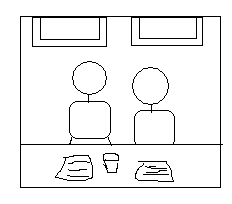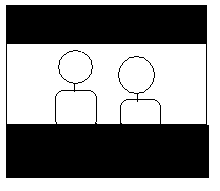
 |
|
| |||||||||||
|
April 02, 2002
Reader Mailbag - What Remains - Remains of The Day
 DVD Talk Reader Robert Rasmussen noted that the 'Pan and Scan' VHS release of Remains of The Day seemed to have picture information at the top and bottom of the screen that wasn't in the 2.35:1 DVD Release: "Probably the most important scene in the film is "The Book". Miss Kenton corners Mr. Stephens in his office and pries a book from his hands. In the VHS version the struggle with the book in picture can clearly be watched. In the DVD version bottom of the frame impedes this subject matter; the book and her hands struggling with his". We posed the question to Columbia Tri-Star and got a great response discussing 'Super 35mm' and the difference between what you see with Pan & Scan and Widescreen - Read their response. DVD Talk Reader Robert Rasmussen noted that the 'Pan and Scan' VHS release of Remains of The Day seemed to have picture information at the top and bottom of the screen that wasn't in the 2.35:1 DVD Release: "Probably the most important scene in the film is "The Book". Miss Kenton corners Mr. Stephens in his office and pries a book from his hands. In the VHS version the struggle with the book in picture can clearly be watched. In the DVD version bottom of the frame impedes this subject matter; the book and her hands struggling with his". We posed the question to Columbia Tri-Star and got a great response discussing 'Super 35mm' and the difference between what you see with Pan & Scan and Widescreen - Read their response.MORE... You are correct when you say that the full-frame version of this movie (found previously on VHS) contains more picture information on the top and bottom of the frame which gets "covered-up" by the black mattes on the widescreen version found on Laserdisc and DVD. However, this film was never meant to be projected that way in a theater. This film was originally shot in the "Super 35mm" format, which means that the original negative in the camera was exposed like this: 
When the film was shown in theaters (in 35mm or the 70mm blow-up) on a large rectangular screen, it looked like this (or a variation like it): 

Archives
Review Staff
| Newsletter Subscribe
| Join DVD Talk Forum
|
| |||||||||
| |||||||||||